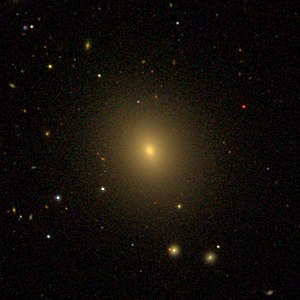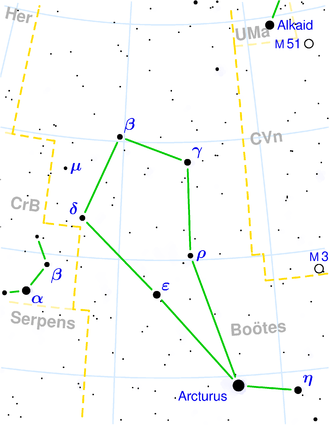NGC 5546
| Galaxy NGC 5546 |
|
|---|---|

|
|
| SDSS recording | |
| AladinLite | |
| Constellation | Bear keeper |
|
Position equinox : J2000.0 , epoch : J2000.0 |
|
| Right ascension | 14 h 18 m 09.2 s |
| declination | + 07 ° 33 ′ 52 ″ |
| Appearance | |
| Morphological type | E2 |
| Brightness (visual) | 12.4 mag |
| Brightness (B-band) | 13.4 mag |
| Angular expansion | 1.3 ′ × 1.1 ′ |
| Position angle | 3 ° |
| Surface brightness | 12.9 mag / arcmin² |
| Physical data | |
| Redshift | 0.024430 +/- 0.000103 |
| Radial velocity | 7324 +/- 31 km / s |
|
Stroke distance v rad / H 0 |
(327 ± 23) x 10 6 ly (100.3 ± 7.0) Mpc |
| history | |
| discovery | Wilhelm Herschel |
| Discovery date | May 1, 1786 |
| Catalog names | |
| NGC 5546 • UGC 9148 • PGC 51084 • CGCG 046-089 • MCG + 01-36-35 • GC 3835, 3836 • H III 551 • h 1770 • LDCE 1042 NED021 | |
NGC 5546 is a 12.4 likes bright elliptical radio galaxy from the Hubble type E2 in the constellation Bootes and about 327 million light-years from the Milky Way center.
It was discovered on May 1, 1786 by Wilhelm Herschel with an 18.7-inch reflector telescope, who called it “Two. Both eF, vS. The place is that of the following. The first precedes the last 3 or 4 ′ ”. The second object mentioned should be NGC 5549 according to Herschel's notes , but is more like NGC 5542 from the position .
